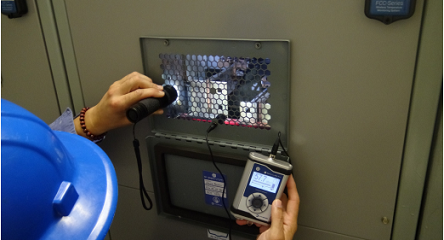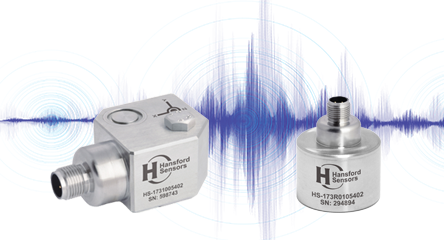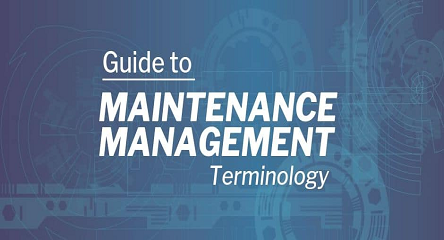SAP Predictive Engineering and the Digital Twin
SAP and ANSYS teamed up in June 2018 to launch the partnership’s first solution called SAP Predictive Engineering Insights (PEI). Prior to this, SAP launched the ‘Digital Twin’ technology at the Hannover Messe exhibition in April this year. The latter is based on the technology of Fedem, a company SAP acquired in June 2016.
Annabelle reached out to SAP’s executives heading SAP Predictive Engineering Insights (PEI) and the Digital Twin technology to understand the importance of these developments for SAP’s global customers and how the company plans to optimize asset operations with real-time engineering analysis.
Annabelle spoke to Vatsan Govindarajan and Arnulf Hagen, both extensively engaged in SAP’s push towards integrating the Digital Twin technology into SAP PEI. The first blog of the two-part series covers the following:
- What is the story behind SAP PEI and the Digital Twin?
- How does the technology work?
- SAP PEI’s leading use cases such as predictive and prescriptive maintenance
- The business value and early adopters of SAP PEI
- Competitive advantage of the product
Annabelle Roux: Can you please introduce yourselves and explain what your role is at SAP?
Vatsan Govindarajan: My name is Vatsan Govindarajan. I’ve been with SAP since 2002 in several roles including corporate strategy and product development.
I am heading the high-fidelity Digital Twin that we develop with sensor-driven analytics. And the second piece of Digital Twin that I am heading is our SAP Visual Enterprise team in New Zealand which is based on the acquisition of Right Hemisphere that happened in 2011.
Arnulf Hagen: I’m Arnulf Hagen. I’ve been the managing director of Fedem since 2013 and was responsible for developing the business plan that resulted in SAP acquiring Fedem Technology in 2016. I continued in the same role until we completed the merger this summer.
Since then, I’m the chief scientist at SAP focusing on theoretical and methodological development of the high-fidelity Digital Twin in SAP, as well as other physics-based methods in the PEI.
SAP PEI and the Digital Twin
Annabelle Roux: SAP announced in June this year the launch of SAP Predictive Engineering Insights, referred to as ‘PEI.’ What is SAP PEI and what is the role of Digital Twin technology in this solution?
Vatsan Govindarajan: SAP Predictive Engineering Insights is a new solution that allows an accurate ‘Digital Twin’ of key assets. It merges the physical and digital world to model an asset’s behavior under real and simulated operating conditions.
The work on SAP PEI started two years ago when we acquired Fedem. We strongly believed that in order to bridge the divide between the physical and the digital world; we need to understand the physics behind the physical world.
The physical world is very deterministic; therefore, it was logical to model the physical reality in the digital world. This gave birth to our ‘Digital Twin’ strategy.
From an asset management perspective, it was not sufficient to have a model of the physical asset. Instead, we wanted to have a Digital Twin that could mimic the behavior of the physical world using engineering analysis and using the simulation tools that are already available.
Fedem was a good starting point because it has multi-body dynamics and the Fedem team has a lot of experience in structural analysis. It helped SAP to get into this space. This is a brief background of the manner in which Fedem simulation was built into the SAP Predictive Engineering Insights.
I would also highlight our partnership with ANSYS. Fedem primarily focused on structures; therefore, we also partnered with ANSYS to exponentially increase the capabilities of Predictive Engineering Insights into engineering domains like fluid dynamics, thermodynamics, semiconductors, entire multi-physics. This enables us to address many use cases in asset management.
Using SAP PEI to Make Sense of a Machine’s Observations
Annabelle Roux: Can you please elaborate how the ‘Digital Twin’ helps customers to run their assets better?
Arnulf Hagen: Users of industrial assets traditionally relied on physical inspections and observations to make sure that their machines are running properly.
If you recall, machinists on the old ships used to listen to the engine in order to find out if everything was okay inside the engine. There is an almost viral spread of sensors and enterprise connectivity. However, these signals need to be analyzed and users need to make sense of the incoming information, just like the engine operator in this ship.
One way to find an anomaly in the machine involves statistics and machine learning methods.
Another way is to use the knowledge we have on physical behavior and the asset itself to refine the sensor signals into interpretable knowledge that either a human or a machine can use in order to trigger some action (if something goes wrong). And also, be able to understand more precisely what is wrong than one would have by simply monitoring the individual sensor signals.
The whole essence of PEI is to make sense out of observations. This sense is made by using engineering methods, which in essence, is based on the physics. Hence, the starting point was to use physics and knowledge about the asset to give a rich understanding to the business user.
Predictive and Prescriptive Maintenance
Annabelle Roux: What is the main use case of this technology and are customers able to use such models for predictive maintenance?
Arnulf Hagen: The use of this information can take different routes. But obviously, knowing how and when something is starting to go wrong is essential in predictive maintenance. So, this is one of the first use cases.
It is also possible to use this information to alert if something suddenly goes wrong. For instance, in case of a bridge or a structure that has suddenly changed behavior. But the predictive maintenance of course, is essential.
Vatsan Govindarajan: We want to move from predictive maintenance to prescriptive maintenance and moving further; we’re aiming for more than just predicting that there is a failure that could happen.
A key difference is that we use physics-based monitoring to answer more granular questions such as:
- What is the failure about?
- Which components are affected by the failure?
- What exactly can be done to increase the lifetime of this asset?
- Beyond simulation, how can you avoid this problem in the future?
Simpler Use Cases
Annabelle Roux: How does this solution apply to businesses that do not face extreme problems?
Vatsan Govindarajan: We’ve also helped customers to monitor simple assets.
With any new technology that comes ahead, we try to apply it to use cases where you can solve a very critical problem. Over a period of time, you would see the application being applied even to simplistic, much less mission-critical issues. It is just an evolution of the technology and the use cases that we will see over the next two to five years.
SAP PEI’s Business Value and Early Adopters
Annabelle Roux: Who are the early adopters of this technology and what business value or return on investment they have obtained?
Vatsan Govindarajan: We have noticed in condition monitoring cases that the primary use case is about getting sensor data and conducting analysis on it.
Customers shift their needs and gradually we move from simple condition monitoring to a much more sophisticated, model-based monitoring. They expect to derive significant business value as a result of implementing an asset monitoring solution. It is only through the combination of simulation-based monitoring and Digital Twin that we can meet the evolving customer needs.
Other use cases that we enable include remote monitoring of wind farms. Our customers really believe in the need to have sophisticated monitoring capabilities and the ability to operate physical assets remotely.
Oil and gas is another case where we see a significant potential in the usage of SAP PEI for both upstream and downstream use cases.
On SAP PEI’s Competitive Advantage
Annabelle Roux: The Digital Twin technology is not new and it has been used previously also. How does your technology stack up against competitors in the market and how is your approach better?
Vatsan Govindarajan: I think it’s not so much about the technology. It’s the combination of assets that we are bringing together.
To our knowledge, we have not seen sensor data in combination with an engineering model being simulated in real time or using an engineering simulation engine on a Big Data, cloud environment that is deeply integrated into a world-leading asset management portfolio.





